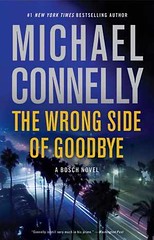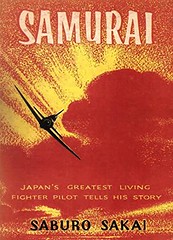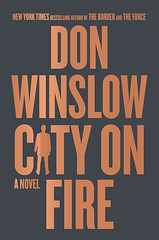 Treasure State (Highway Quartet #6)
Treasure State (Highway Quartet #6)
C.J. Box
![]()
“Treasure State,” C.J. Box’s latest, is the 6th in a series of novels set in Montana (the ABC/Hulu series “Big Sky” is loosely based on them). I’ve read each in order, along with Box’s Joe Pickett novels (set in Wyoming, also being serialized on streaming TV).
In both series, Box hints at a MAGA/Fox News worldview by inserting right-wing talking points into the mouths of secondary characters, but in this one he’s got the protagonist, Cassie Dewell, making wisecracks about “useless paper masks” and judging those who still wear them more than a year into the Covid pandemic. I won’t be surprised if in the next novel he has her say she’s done her own research and refused the vaccine. Another tell, from later in “Treasure State”:
“Wonderful,” Cassie said, “especially since self-defense is a controversial topic these days.”
“Not in Montana, it isn’t.”
I love the stories Box spins, but his intrusive propagandizing leaves a bad taste in my mouth. Box, a Wyoming native, seems to assume everyone who lives in and/or loves the Mountain West shares his views. I’ve lived in both Wyoming and Montana and contest the assumption, just as I contest most people’s assumption that, as a military officer, I’m a rabid Trumpite who endorses every insane thing Mike Flynn says, and that if I don’t I must be one of Rush Limbaugh’s phony soldiers.
Does Box’s worldview interfere with my enjoyment of his novels? It’s starting to. At least in the Joe Pickett books, the right-wing crap is balanced by Nate Romanowski’s skepticism of government and humanity in general. The only character in the Cassie Dewell novel who ever stands up to her when she goes all Sean Hannity is her mother Isabel, who’s depicted as a useless, laughable hippie.
From what I’ve seen of “Big Sky,” the ABC/Hulu TV adaptation, the producers have wisely cut all that shit out.
 The Wrong Side of Goodbye (Harry Bosch #19)
The Wrong Side of Goodbye (Harry Bosch #19)
by Michael Connelly
![]()
I’m reading Connelly’s Bosch novels, but out of order: 1/2/20/18/5/23 … and now 19. Have also read the first three of his Renee Ballard novels (in which Bosch makes post-retirement appearances) in order, plus one Mickey Haller novel (a character I like on screen but not on the page).
There are two plot lines to this novel, reflecting the two hats Bosch wears after his forced retirement from the LAPD: for half the novel Bosch, a licensed PI, works a private case for a wealthy client; in the other half Bosch works a serial rapist case for the San Fernando PD, where he’s a part-time reserve officer. Both stories are essentially novellas and are mostly unconnected, except for one thing (which bothers me the more I think about it):
When Bosch solves the serial rapist case, he learns from the final victim, a female SFPD cop he works with, that the rapist tortured personal information about Bosch out of her, including the fact that he has a daughter in college down in San Diego. Since Bosch’s other case, the private investigation for the wealthy client, involves shady former cops trying to sabotage the investigation and stop Bosch, I expected there to be a tie-in between the rapist cop and the bad cops involved in the other case, and for there to be a tense situation involving Maddie, Bosch’s daughter, but Connelly never followed up on it.
As always, Connelly’s refusal to include contractions in his characters’ speech makes the dialog somewhat wooden, but at least that dialog is crystal clear. As many have observed, when it comes to police procedurals Connelly is the best explainer in the business, laying everything out in A to B to C to D fashion. His novels are always satisfying — and dare I say educational? — reads.
 Samurai!
Samurai!
by Saburo Sakai, w/Martin Caidin & Fred Saito
![]()
I met Mr. Sakai in 1982 when he visited Elmendorf AFB in Alaska, where I was stationed as an F-15 pilot. His tour of Elmendorf and other military bases was arranged by the US government, and he traveled with one of the two US Army P-40 pilots who managed to get airborne from Wheeler Field during the Pearl Harbor attack on Dec 7, 1941. Although Saburo Sakai was not a participant in the Pearl Harbor attack (he was fighting in the Philippines on the Day of Infamy), the two were paired to represent the two sides of the air war in the Pacific. I gave the men a tour of our F-15 simulator facility, including some cockpit time for each, before they were whisked away by their escort officers. At the time, I’m embarrassed to admit, I didn’t know the first thing about Sakai or his remarkable record as a Japanese Imperial Navy fighter pilot during WWII. I’m trying to make up for that now.
As for his memoir, I was most interested in the details of how the Imperial Japanese Navy recruited pilot candidates, their rank structure (Sakai was an enlisted man until very late in the war), how they trained on the ground and in the air, how they were billeted and fed during deployments to Lae, Rabaul, and Iwo Jima, and how they communicated in the air (there being no radios in Zeros early in the war). I was disappointed in the skimpy descriptions of dogfights and tactics, and perhaps that is the fault of the translator. I wish he had gone into more detail.
Sakai’s description of life as a Navy man during the war, particularly as the tide turned against Japan, is fascinating, and here he does go into great detail, describing primitive facilities and the almost nonexistent resupply chain between the homeland and forward-deployed units in the Pacific. The glimpses he provides of civilian life at home in Japan during occasional leaves and later, during his hospitalization, are also fascinating. The folks at home were fed a diet of non-stop propaganda utterly ungrounded in reality, and by the time they realized they were being lied to and were in fact losing the war there wasn’t much anyone could do other than what they were already doing … nearly everyone, by 1944, was working in direct support of the war in one role or another. Alas, I was not at all interested in the many pages Sakai devoted to his future wife and yawned my way through those sections, anxious to get back to the fighting.
I read the Kindle edition, which included a fair number of typos. I wondered if the print editions contained maps and illustrations, because those would have been helpful. As it was, I kept my iPad at my side to look up maps of the Pacific islands Sakai flew from and the American and Australian airfields he attacked, occasionally looking up Japanese fighter types on Wikipedia.
Naturally, Sakai was a patriotic Japanese citizen (and not just that … he actually came from a Samurai family). He was, in every way, prepared to die for his country. There is no tone of apology in his memories, nor should there be. For many Americans, including myself, the events Sakai describes, and their aftermath, are very much within living memory. My father, then a sailor, was in the fleet attacking Okinawa. I was stationed at Kadena Air Base on Okinawa, a Zero base during the war, and later at Hickam Field in Honolulu, working in a building still bearing bullet pocks and scars from the December 7th attack. I’ve been to Guam and Truk Lagoon, both occupied by the Japanese during the war. I’ve flown out of RAAF Darwin, once attacked by the Japanese, and the remote airfield on Shemya Island (ditto). I know people from both sides who lived through the war (though there aren’t many left today).
There are many who on principle will never read the memoir of a man who fought on Japan’s side, and I cannot blame them. But I wish I’d known who Sakai was when I met him in 1982 … I’d have peppered him with questions!
 City on Fire (Danny Ryan #1)
City on Fire (Danny Ryan #1)
by Don Winslow
![]()
I recall reading another Winslow novel, “The Power of the Dog.” Looking back at my review of the earlier book, I discover I gave it three stars as well. My reason for that so-so reaction was Winslow’s constant editorializing, inveighing against the corrupting power of drugs in Mexico and the USA, when the corruption he showed through his plot and characters was already vivid and needed no further boost.
In the case of “City on Fire,” I’m so-so because I don’t think Winslow tried hard enough. He didn’t create interesting or sympathetic characters. His world-building, making Providence with its working-class crime and working-class criminals come alive, was lacking. His dialog, especially, fell flat, a far cry from masters like Elmore Leonard and George V. Higgins. And he was repetitive … how many times did Danny Ryan or Pat have to explain why they didn’t want to make the ongoing war between their two crime families worse than it already was?
This business of inflating the novelistic concept of “City on Fire” by comparing it to Homer’s Iliad: can’t you say that about almost every novel written? Which is to say I don’t buy it. This is a story about unlikable low-class people living crappy low-life lives. It’s interesting enough to keep turning pages, but there’s nothing memorable about it.
 Sea of Tranquility
Sea of Tranquility
by Emily St. John Mandel
![]()
“Sea of Tranquility” was not (for me, alas) up to the level of Emily St. John Mandel’s previous novels. It’s a time-travel story, possibly written with a streaming series in mind, lacking the depth of characterization and world-building of “Station Eleven” and “The Glass Hotel” (some characters from which make appearances in this novel). Not to say there aren’t some good moments, but I doubt any of them will stick with me the way parts of the previous novels have. With the time travel element, it’s a gimmicky story, which is what led me to the thought it may have been written for TV (please forgive me if I’m wrong on that, Emily).
And speaking of gimmicky, how about the “machinery” that creates Earth gravity within the three Moon colonies? I need more than that if I’m to believe, and that goes double for time travel.
 Parabellum
Parabellum
by Greg Hickey
![]()
I read a pre-publication copy of “Parabellum” in exchange for a review.
The programmer, the ex-athlete, the student, the veteran. One will crack and commit mass murder. Hickey tries hard to give us insights into the four, but by choosing not to give them names until the climax of the novel he renders them abstract and unrelatable. The name issue bothered me more the further I read, particularly when the veteran began referring by name to a soldier who died alongside him in Iraq. Why should this one side character be named when none of the main characters are? I never did solve that mystery. It ain’t how I would’ve written this novel, is all I’m sayin’.
In the end, the dam bursts and names come flooding out. Victims’ names at first, people we’ve never met before and won’t know for long, then the names of two of the main characters we’ve followed throughout the novel. There’s a reason the other two remain unnamed, and that will become clear to readers at the end.
Along the way, lots of long conversations between the four main characters and their friends, family, co-workers, and therapists. This is where we get into the minds of the programmer, the ex-athlete, the student, and the veteran, any one of whom could turn out to be the monster. Some conversations turn tedious. Sometimes they devolve into gun porn. Action? You’re going to wade through a hell of a lot of exposition, some of it repetitive, before you get to it, compressed into the final chapter.
Did I learn anything about mass killers? I honestly can’t say. Don’t we all have gloomy thoughts and occasional bouts of self-doubt? Haven’t most of us had to deal with life-changing setbacks? Did we not hate middle school and puberty? If we served, didn’t many of us suffer injuries and PTSD? Do any of us go on shooting rampages?
I wasn’t able to guess, until very nearly the end, which of the four — the programmer, the ex-athlete, the student, or the veteran — would be the one to rent a room at the Mandalay Bay (oops, I meant to type “hunker down behind a concrete wall at the beach”) and start shooting, and then when my guess turned out to be correct I said yup, that makes sense based on all Greg Hickey told me about that character. But did I really gain any useful insight into what makes a person a mass killer? Again, I can’t say.
If you’re in the mood for a novel about mass killers, this one’s for you!